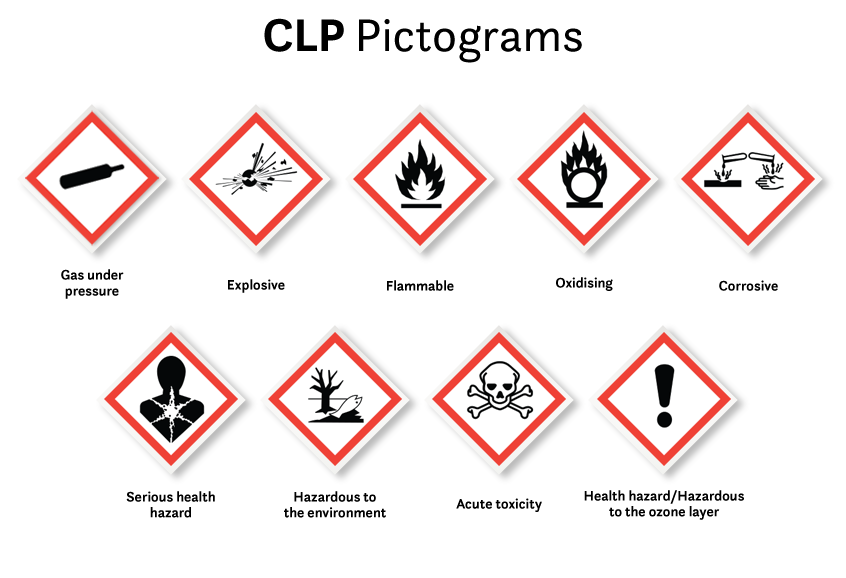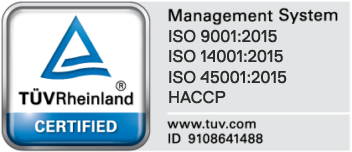Welcome again to our series of articles related to REACH and its obligations. Last time we explained what REACH is and today we promised to talk about CLP.
Learn more:
- E-Liquid Regulations In The World
- E-Liquid Regulations Guide: [Get Your Free E-Book]
- Tobacco Product Directive (TPD): All You Need To Know
- REACH: What Is Reach And Why We Talk About It?
- E-Liquid Industry Regulations: REACH and CLP
- REACH and CLP Summary On The Example of PureNic 99+ Pure Nicotine
- Fees, Taxes And More: An Analysis Of Selected Regulations In Europe
- Excise Duty In The Vape Industry [Guide]
CLP meaning: does it influence e-liquid manufacturers?
Again the name of this Regulation comes from the first letters of a phrase: Classification, Labelling, and Packaging. As you know those three issues are very important for the chemical industry.
Nowadays it may be obvious that a product composed of chemical substances on a shop shelf has a label informing you about any threats that may be caused by this product. This information and the way we display it on a product is regulated by the CLP.
Since when has the CLP been in force?
Born on 16 December 2008, it came into force on 20 January 2009, but a lot of time was given to companies to fully comply with this regulation. First, it was supposed to be 1 June 2015, but shortly before this date, the deadline was moved to 1 June 2017. So as you can see the time given to adapt new regulations can witness the complexity of these rules.

What do the CLP classifications cover?
Even now every new regulation related to CLP has a transitional period for adaptation. This is because the legislator always gives time to sell out already packed and labelled products so that manufacturers or importers do not incur the additional costs of recalling outdated and incompatible products from the market. Substances and their mixtures can have different properties. Some of them can cause no harm to human health or the environment and some of them can be extremely hazardous.
That is why the first step is to always define the possible hazard. That kind of information is not only important for the end-user, but also for everyone who had to deal with it on the way, starting from the producers, distributors or even transporters and ending on consumers.
We have been in the vape and e-liquid sector since 2013. Dozens of clients have trusted us and we have launched over 300 products and brands. Use our resources and experience and together we will earn your success – rapidly check our Knowledge Base.
Usually in EU, the chain of information starts with a manufacturer, but if the substance is imported from outside of EU this obligation can be transferred onto the importer. Chemicals can be harmful, toxic or fatal depending from the route of contact with the human body, whether the substance was inhaled, ingested or absorbed through the skin.
Check our guide about safe usage of chemicals.
Other CLP classifications include irritant or corrosive to eyes and skin, allergic to skin and for the respiratory system, carcinogenic, mutagenic and toxic for reproduction, etc.
Not only the impact on live organisms are evaluated but also their physical properties like explosiveness, flammability, self-reactivity, pyrophoricity, self-heating, gas release in contact with water, oxidation, corrosiveness action on metals.
As you can see it is a lot of work. When the chemical (in our case – nicotine base, flavorings or e-liquid) is correctly classified, you can start designing the label and select the appropriate packaging.

CLP in packaging design
Depending on the threat level, the label of your product can have no extra marking or multiple mandatory pictograms, warning signs, hazard statements and precautionary statements.
Regulations even cater to blind people, providing a warning sign in the form of a convex triangle in case if the chemical poses a threat or child-proof mechanisms when needed. Further on the tests results used to classify substances also help to identify the danger it poses in transport, for example by road.
And it helps to match the appropriate packaging so that the storage of the substance, as well as its transport, does not endanger the life and health of people and the environment.
See also:
- Nicotine Shots: Dealing With TPD Regulations
- TPD Compliant E-Liquid Packaging: Part 1
- TPD Compliant E-Liquid Packaging: Part 2
- E-Liquid Bottles Nozzle Requirements
- What Is UFI Code And How Does It Apply To The E-Liquid Industry?
Summary
Considering the above, we think that people, when buying an e-liquid for their e-cigarette, are not aware that the mixture and its packaging must go a long way, before reaching the shelf in their favourite vape shop. Hopefully, this is a good introduction to the next article, where we will explain the regulations on one of our products as an example. See you then, and in the meantime, you can read more about e-liquid regulations.
Let’s grow your business together!
Subscribe to our newsletter and receive a free access to our e-mail course on raw materials for e-liquids production (and more!).
No spam, only valuable content we promise to send you.

















